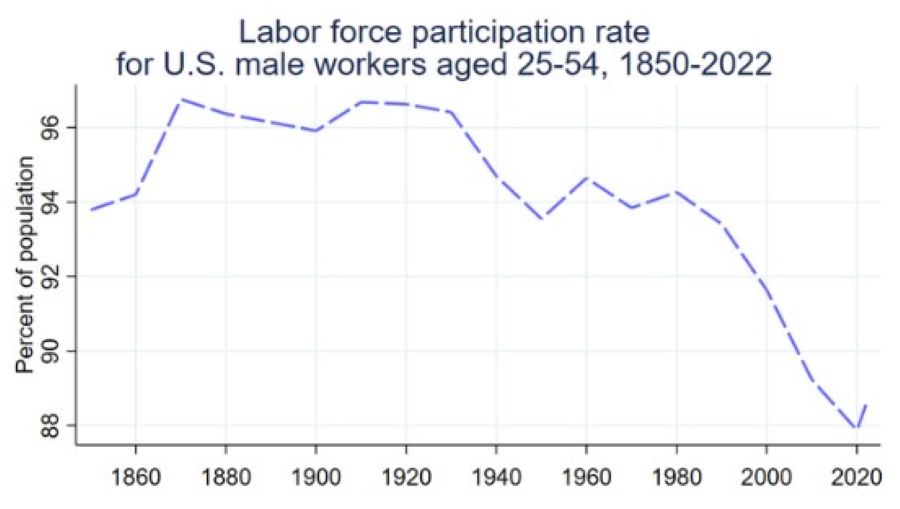Here at The Point Blog, we have been writing a series. Last month, I gave an overview of What’s Affecting the Labor Force Participation Rate? Lorrie followed that up with When Working Costs too Much concerning the benefits cliff and Taylor took a closer look at Baby Boomers Retiring-How do we fill their shoes? This week, I am going to take a deeper dive into some of the reasons that males (age 25-54) are evaporating from Labor Force Participation and some possible solutions for our future workforce.
The Labor Force Participation Rate is defined as those who are actively looking for or seeking work. According to Male Labor Force Participation: Patterns and Trends there are multiple reasons that males of prime age aren’t seeking employment. Among those reasons are a shift in U.S. industry structure, a decline in male educational attainment, delayed family formation, the rise of substance abuse, and heavy use of video games.
How can we address the deficit and encourage male workers to get back into the workforce? Read what The Demographic Drought has to say about solutions to our workforce future.
- Recruit beyond traditional demographics-HR directors will need to look into recruiting people that normally would have been overlooked as candidates to fill vacant positions.
- Reskilling, upskilling, and alignment-Companies can’t assume they’ll be able to find the right talent. Instead, they must build that talent base for themselves. By working with higher ed to build programs that meet the needs of the job market, offering upskilling or reskilling opportunities to current employees, and providing on-the-job training for new recruits, businesses can close or at least narrow their talent gaps.
- Retain students and employees-Colleges and universities must focus on retention, not just enrollment. Similarly, businesses must focus on retaining current employees, not just hiring.
In conclusion, we need to value people more. At Horizon Point, we offer a two-day intensive workshop uniquely designed to help business and community leaders examine workplaces of the past and present and explore high-impact solutions for creating workplaces and a workforce for the future. Learn more about our Illuminate content, here.


